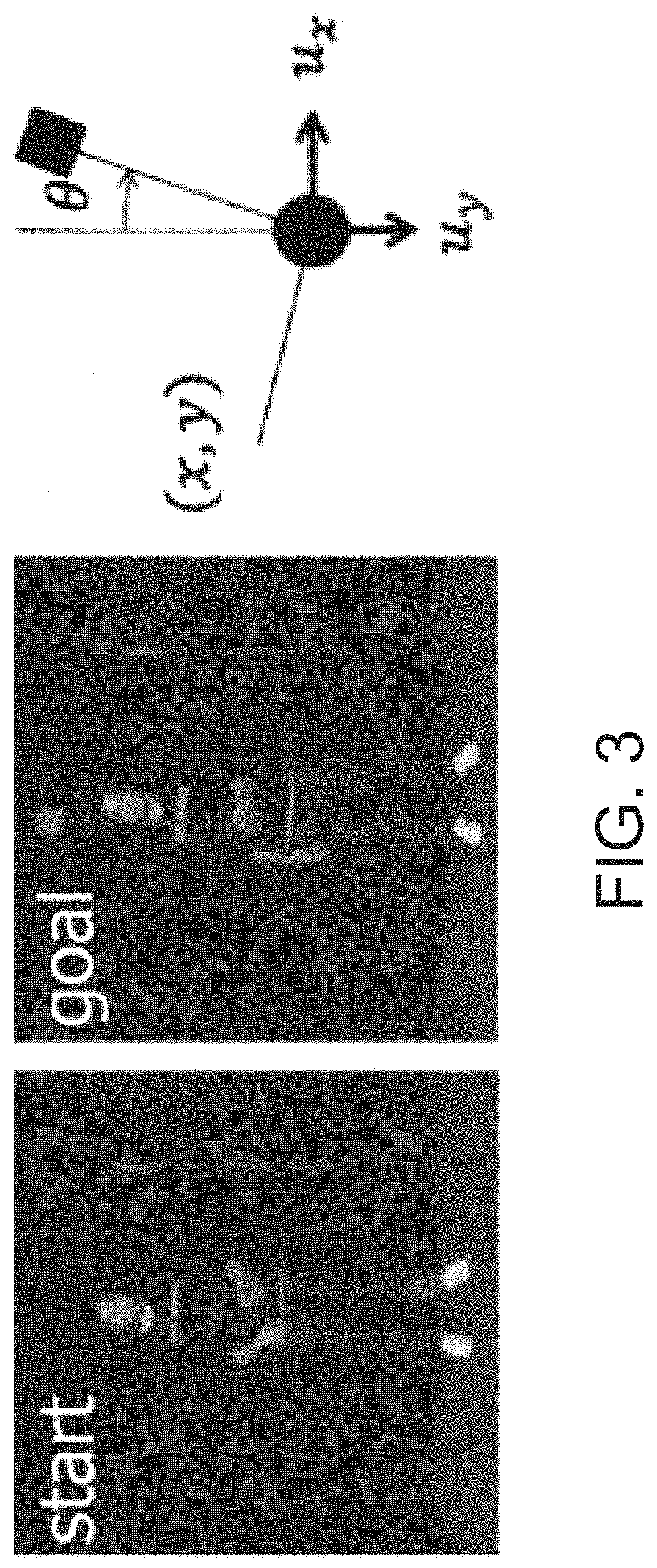Direct inverse reinforcement learning with density ratio estimation
a density ratio and inverse reinforcement technology, applied in the field of inverse reinforcement learning, can solve the problems of difficult to find an optimal policy, require the entire trajectory data, and process is usually very time-consuming, and achieve the effect of effectively and efficiently performing inverse reinforcement learning
- Summary
- Abstract
- Description
- Claims
- Application Information
AI Technical Summary
Benefits of technology
Problems solved by technology
Method used
Image
Examples
embodiment 1
I. Embodiment 1
[0112]The present disclosure provides a brief introduction of Markov Decision Process and its simplification for a discrete-time continuous-space domain. Let and be the continuous state and continuous action spaces, respectively. At a time step t, a learning agent observes the environmental current state xt∈ and executes action ut∈ sampled from a stochastic policy π(ut|xt). Consequently, an immediate cost c(xt, ut) is given from the environment and the environment makes a state transition according to a state transition probability PT (y|xt, ut) from xt to y∈ under the action ut. The goal of reinforcement learning is to construct an optimal policy π(u|x) which minimizes the given objective function. There exist several objective functions and the most widely used one is a discounted sum of costs given by:
[0113]V(x)=𝔼[∑t=0∞γtc(xt,ut)],(1)
where γ∈[0, 1) is called the discount factor. It is known that the optimal value function satisfies the following Bellman equa...
embodiment 2
II. Embodiment 2
[0191]Embodiment 2 that has superior characteristics than Embodiment 1 in some aspects will be described below. FIG. 12 schematically shows differences between Embodiment 1 and Embodiment 2. As described above and shown in (a) in FIG. 12, Embodiment 1 used the density ratio estimation algorithm twice and the regularized least squares method. In contrast, in Embodiment 2 of the present invention, a logarithm of the density ratio π(x) / b(x) is estimated using a standard density ratio estimation (DRE) algorithm, and r(x) and V(x), which are a reward function and a value function, respectively, are computed through the estimation of a log of the density ratio π(x,y) / b(x,y) with the Bellman equation. In more detail, in Embodiment 1, the following three steps were needed: (1) estimate π(x) / b(x) by a standard DRE algorithm; (2) estimate π(x,y) / b(x,y) by a standard DRE algorithm, and (3) compute r(x) and V(x) by a regularized least squares method with the Bellman equation. In...
PUM
 Login to View More
Login to View More Abstract
Description
Claims
Application Information
 Login to View More
Login to View More - R&D
- Intellectual Property
- Life Sciences
- Materials
- Tech Scout
- Unparalleled Data Quality
- Higher Quality Content
- 60% Fewer Hallucinations
Browse by: Latest US Patents, China's latest patents, Technical Efficacy Thesaurus, Application Domain, Technology Topic, Popular Technical Reports.
© 2025 PatSnap. All rights reserved.Legal|Privacy policy|Modern Slavery Act Transparency Statement|Sitemap|About US| Contact US: help@patsnap.com



